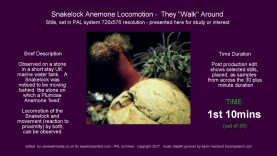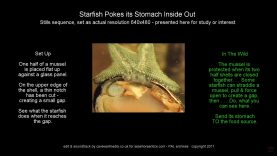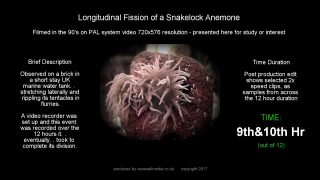Common Mussel filter-feeding – Schlieren Imageing – Seeing the Unseen
Cast
To See The Unseen:
A Common Mussel is filter-feeding and Schlieren Imageing techniques reveal the fluid-flow that cannot be seen with the naked eye.
The fluid-flow itself is “work done” by the mussel, to suck seawater in, filter food particles and uuumph the water out agan, all in a flow-like stream.
A bit of science was needed. Schlieren Imageing (Photography), captures the end results of it, the mussel….. doing it’s thing.
This Mussel Filter-Feeding Schlieren Project:
The fuller story on the author and filming for science:
Excerpt of authors plan and prep:
I decided that Degrees are more common nowadays, so I opted for the ‘me’ Hons project as being a far more valuable and individual component than just getting a box-standard 2:1… so here’s how the plan looked…
… I need the cash to get the equipment…
… But all my time available is being taken up with the final module of the Degree…
… I will now not do the remaining part… Write it off… With this module now sacrificed from around a 70% to just below a 40% minimum pass, this will drop my degree to a 2:2, BUT, now allow me time to go out to work and get the money to buy the equipment… and get me a ‘me’ Hons project.
Full Article Here:
* CaveWallMedia portfolio
Excerpt of article – made visible with science:
………. When an object is observed (go stare at something), you make it out (see it – as you are the observer) from the light that comes from it, heading towards where your eyes are.
The Schlieren photography method gets a precise grip on the light heading to the observer (a camera). The precision is gained from a concave mirror, made with extremely precise engineering standards and end optical quality.
In the video, the Schlieren images seen are all within a circular background…. That background is determined by the mirror size…. only things occurring in front of one of these mirrors, can be observed with this method.
The mirror used in the video is 150mm diameter and has a long focal length of 1500mm…. the object to be observed must fit within the 150mm diameter, (no problem for a mussel) and must be placed in front of the mirror, but well behind its focal point (the long focal length of 1500mm allows this.
The camera should be placed ……….
Full Article Here:
* CaveWallMedia articles
Nudge Nudge Info:
The video was filmed in PAL 720×576 and has been re-edited for SeaShore Antics archives, set in a HD frame with a bit of surrounding gumf, as a stimulus for education or intrigue, to learn or start discussion about our seashore and it’s inhabitants. . . or science as a method of observing stuff.
Social Media:
Discuss and comments on facebook page and youtube channel:
* Facebook page Comments
* Youtube channel Comments
You can subscribe to SeaShore Antics. Your support would be great and you can get notifications on the future video releases. . . HD and Diving filmed perspectives coming up.
* Go SeaShoreAntics Youtube Channel. . and Subscribe
SeaShore Antics. . . It’s what they do!















